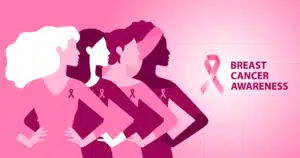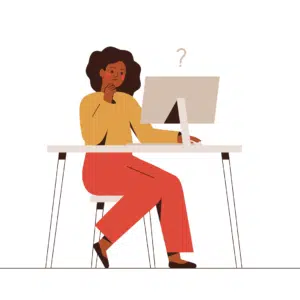
So how do you know if your period is normal? Or if you should be concerned about what’s going on with your body?
Normal periods
There’s a broad range of what’s considered a “normal” menstrual cycle, and generally, it’s what’s right for you. The cycle begins at the first day of your period and lasts until the first day of the next one, and this can be anywhere from 21 to 35 days. Your period itself can last 2 to 7 days depending on your body.
It’s different for every woman whether your period is heavy, light, painful, or pain-free. Your symptoms and the length of your period could even change from month to month and still be deemed normal. As you age, your period normally shortens and becomes more regular.
To determine if your period is normal, it’s a good idea to track it and keep an eye out for patterns.
Tracking your cycle
Some important things to track include:
Start and end date: This will help you monitor how long your cycle is, whether it varies month to month, and when you can expect your next period to begin.
Flow heaviness: Are you bleeding heavily or is your flow light? Does it seem different than normal?
Pain: If you have cramps, keep track of when they start and how long they last. If they become worse, make a note of that.
Abnormal bleeding: This includes bleeding in between periods or other irregularities.
Any other changes: Mood changes or anything else that seems odd or unexpected should be written down.
Problem periods
It’s normal for your menstrual cycle to have some irregularities, but there are some symptoms that may indicate an underlying problem. You should see a doctor if you’re experiencing any of these symptoms:
- Your periods stop for more than 3 months, and you are not pregnant.
- Your period lasts longer than seven days.
- You bleed between periods.
- Your periods are less than 21 or more than 35 days apart.
- You’re experiencing severe pain that causes you to miss work, school, or other activities.
- You’re bleeding much more heavily than normal.
- Your periods were regular but suddenly become irregular.
If you’re experiencing any of these symptoms, or have other questions about your menstrual cycle, it’s wise to talk to your physician. They could be evidence of a range of issues.
Possible causes
Pregnancy: A missed period could be a sign of pregnancy. Alternatively, if you have just given birth and are breastfeeding, your period might be slow to return to normal.
Eating disorder: If you are not providing your body with the proper nutrients or have been exercising excessively, you may miss a period or cause it to stop altogether. Rapidly losing a lot of weight can have the same effect.
Premature ovarian failure: Some women lose normal function of the ovaries before age 40, and their ovaries stop producing normal amounts of estrogen or releasing eggs routinely. This can cause irregular or infrequent periods for months or even years. The condition is also known as primary ovarian insufficiency and is often treated through estrogen supplements.
Pelvic inflammatory disease: This is an infection of a woman’s reproductive organs. It’s evidenced by irregular bleeding or bleeding between periods. This condition can cause complications with fertility and other damage to the reproductive system if not diagnosed early, but it can be treated with antibiotics.
Uterine fibroids: These are noncancerous tumors that grow on or in the muscle walls of the uterus. Symptoms include heavy bleeding and severe pelvic pain. A wide range of treatment options exist, including a minimally invasive procedure called uterine fibroid embolization.
More information
To learn more about what could be causing severe pain or other problems with your menstrual cycle, check out this page on period cramps and other menstrual conditions.
Even if you’re not sure an irregularity with your period is normal or not, it’s always a good idea to talk to your doctor if you have questions.
PLEASE NOTE: The above information should not be construed as providing specific medical advice but rather to offer readers information to better understand their lives and health. It is not intended to provide an alternative to professional treatment or to replace the services of a physician.















